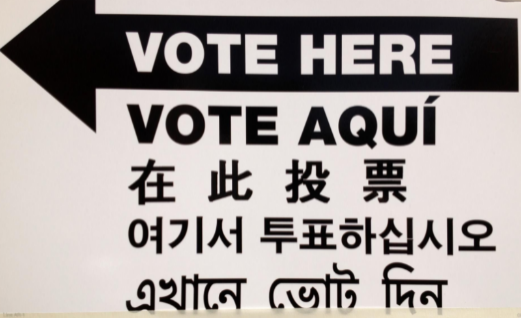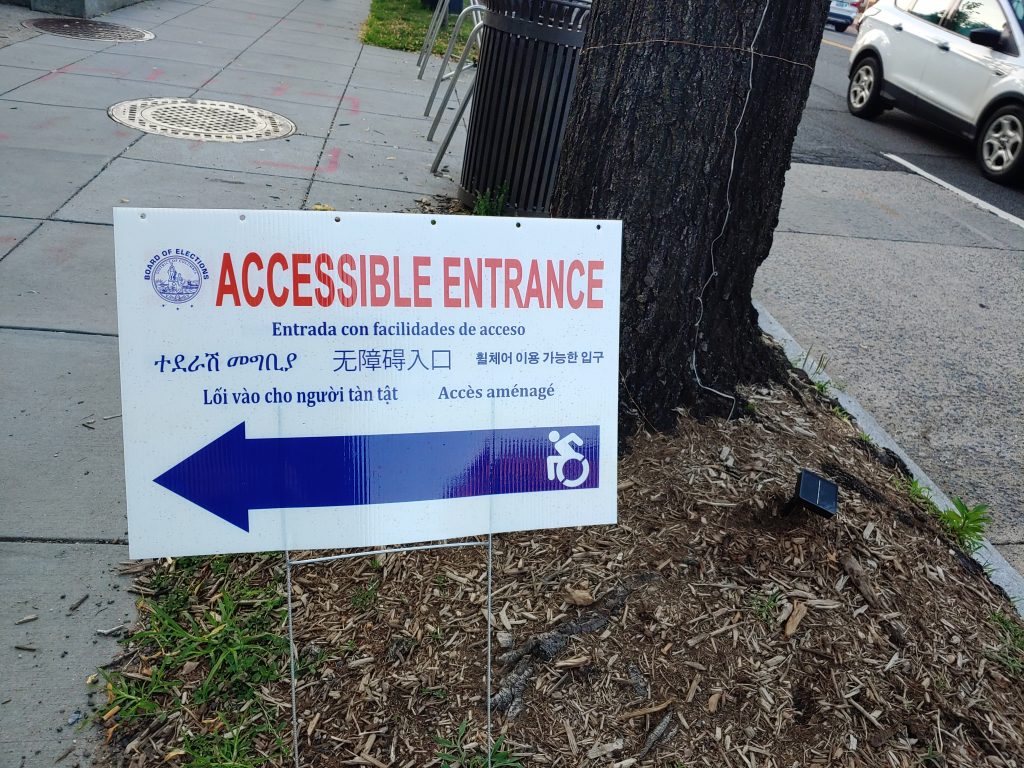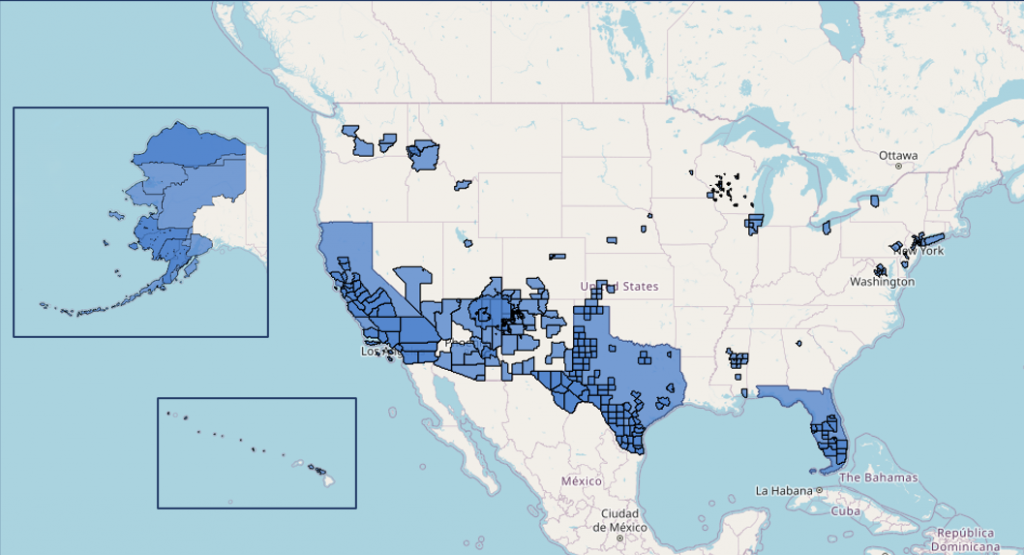Keira Ballantyne
Map credit: Jessica Debski

What laws protect voting access for multilingual voters?
The United States is a multilingual nation. The U.S. Census Bureau (n.d.) estimates that around 66 million of us—more than 20% of the U.S. population—speak a language other than English at home. More than 350 distinct languages are estimated to be spoken across U.S. households (Commission on Language Learning, 2016). More than 24 million voting-age citizens in the United States are entitled to receive minority language assistance in elections. These include U.S.-born and naturalized foreign-born voters.
The U.S. Department of Justice recognizes that (2020):
The United States is a diverse land with a government selected by the votes of its citizens. Federal law recognizes that many Americans rely heavily on languages other than English, and that they require information in minority languages in order to be informed voters and participate effectively in our representative democracy. Many provisions of federal law protect the voting rights of language minority Americans. (para. 1)
Recognizing that language minority voters cannot be excluded from electoral participation, Section 203 of the Voting Rights Act ensures that in areas with sufficient numbers of linguistic minority residents, voting notices, forms, instructions, assistance, or other materials or information must be provided in the language of the applicable minority group.
When must language access be provided?
A state or political subdivision must provide language assistance to voters
- When more than 10,000, or more than 5%, of voting-age citizens are members of a single-language minority group and do not “speak or understand English adequately enough to participate in the electoral process”; AND
- When the rate of those citizens who have not completed the fifth grade is higher than the national rate of voting-age citizens who have not completed the fifth grade (U.S. Census Bureau, 2021).
Which languages are covered?
Not all languages are covered by Section 203. The law covers Spanish, Asian languages, Native American languages, and Alaska Native languages. Advocates have expressed concerns over access in languages that are not covered, and some jurisdictions provide language assistance in additional languages, including Arabic in Dearborn, Michigan, and Haitian Creole in Miami-Dade, Florida (Wang, 2022).
In addition, data on languages with fewer speakers is underspecified. In a number of jurisdictions, the language minority group is listed as “all other American Indian tribes.”
Which jurisdictions are covered?
The U.S. Census Bureau uses the decennial census to compute the locations that must be covered by Section 203 of the Voting Rights Act. Using data from the 2020 census, the Census Bureau released a revised list of areas covered by Section 203 in December 2021.
A list of the 331 jurisdictions covered in the 2021 findings was published in the Federal Register on December 8, 2021 (U.S. Department of Commerce, 2021).
The 2021 determinations found:

- A total national population of 24,244,810 voting-age citizens residing in the 331 covered jurisdictions required to provide minority language assistance.
- An increase of 22.3% in the total national covered population when compared with the 2016 covered population of 19,823,420 (residing in 263 jurisdictions)
- A total of 20,386,604 Hispanics, 3,621,264 Asians, and 236,942 American Indian and Alaska Native voting-age citizens in the covered jurisdictions (U.S. Census Bureau, 2021).
Click to see an interactive map of the jurisdictions covered by the 2020 Section 203 determinations.
The mission of the Center for Applied Linguistics is to seek solutions to issues involving language and culture as they relate to access and equity in society and education around the globe. We encourage all our readers to understand the language access rights of linguistic minority groups in their community and to support local and national efforts to expand language access.
References
Commission on Language Learning. (2016). The state of languages in the US: A statistical portrait. American Academy of Arts and Sciences. https://www.amacad.org/publication/state-languages-us-statistical-portrait
U.S. Census Bureau. (2021, December 8). Census Bureau releases 2021 determinations for Section 203 of the Voting Rights Act [Press release]. https://www.census.gov/newsroom/press-releases/2021/section-203-voting-rights-act.html
U.S. Census Bureau. (n.d.). Why we ask questions about … language spoken at home. Retrieved August 20, 2022, from https://www.census.gov/acs/www/about/why-we-ask-each-question/language/
U.S. Department of Commerce. (2021, December 8). Voting Rights Act Amendments of 2006, determinations under Section 203. Federal Register, 86(233), 69611–69618. https://www.govinfo.gov/content/pkg/FR-2021-12-08/pdf/2021-26547.pdf
U.S. Department of Justice. (2020, March 11). Language minority citizens. https://www.justice.gov/crt/language-minority-citizens
Wang, H. L. (2022, June 26). A federal law requires translated voting ballots, but not in Arabic or Haitian Creole. NPR. https://www.npr.org/2022/06/24/1083848846/bilingual-ballots-voting-rights-act-section-203-explained


